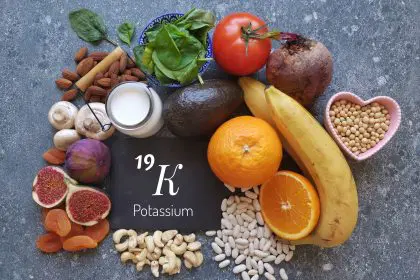Discover how incorporating these affordable pantry staples into your diet could help manage arthritis symptoms while boosting overall nutrition
How legumes fight inflammation naturally
Arthritis affects millions of Americans, causing joint pain, stiffness, and reduced mobility. While medication remains a primary treatment approach, growing evidence suggests that dietary choices significantly impact inflammation levels and symptom management. Legumes—including beans, lentils, and peas—have emerged as particularly beneficial foods for arthritis sufferers due to their unique nutritional profiles.
The anti-inflammatory properties of legumes stem from their impressive combination of nutrients. These plant-based foods contain high levels of antioxidants that neutralize free radicals—unstable molecules that can damage cells and increase inflammation throughout the body. By reducing oxidative stress, these antioxidants help calm inflammatory responses that contribute to arthritis pain.
Legumes also contain natural compounds called phytonutrients that directly influence inflammatory pathways in the body. These bioactive components help modulate immune system responses that trigger inflammation in joints. The fiber content in legumes further supports gut health, which increasingly appears connected to inflammatory conditions throughout the body, including in the joints.
For those managing arthritis, incorporating legumes into meals offers an affordable, accessible, and delicious way to potentially reduce symptoms while improving overall nutrition. These versatile foods can be incorporated into countless dishes, from soups and salads to main courses, making them practical additions to an anti-inflammatory eating pattern.
Black beans: The antioxidant-rich inflammation fighter
Black beans stand out among legumes for their exceptional antioxidant content. Their dark color indicates high levels of anthocyanins—powerful plant compounds that combat inflammation throughout the body. These antioxidants help neutralize harmful free radicals that contribute to joint damage and pain in arthritis.
The fiber profile in black beans delivers additional anti-inflammatory benefits. Each cup provides approximately 15 grams of fiber, which supports digestive health and helps maintain a balanced gut microbiome. Emerging research suggests that gut health plays a crucial role in systemic inflammation, making this fiber particularly valuable for arthritis management.
Black beans also contain significant amounts of magnesium, a mineral that many arthritis sufferers lack. Magnesium deficiency has been linked to increased inflammation and pain sensitivity. Each cup of cooked black beans provides about 120 milligrams of magnesium, helping meet daily requirements for this essential mineral.
The versatility of black beans makes them easy to incorporate into an arthritis-friendly diet. They can be added to Southwest-inspired salads, blended into dips, included in vegetable soups, or served alongside brown rice for a complete protein source. Their mild flavor adapts well to various seasonings, making them acceptable even to selective eaters.
Chickpeas: Joint-friendly protein powerhouses
Chickpeas, also known as garbanzo beans, deliver exceptional nutritional value for arthritis sufferers. These legumes contain significant amounts of fiber and protein while remaining low in fat, creating a balanced nutritional profile that supports joint health.
The specific fiber in chickpeas may help reduce inflammatory markers in the body. Each cup provides about 12 grams of fiber, including a mixture of soluble and insoluble types. The soluble fiber, in particular, helps regulate immune system responses that can trigger arthritis flare-ups.
Chickpeas contain notable levels of choline, a nutrient that helps fight inflammation through multiple pathways. Choline assists in maintaining the structure of cellular membranes and plays a role in nerve transmission, potentially helping reduce pain signals from inflamed joints.
These versatile legumes also provide substantial amounts of zinc and selenium, minerals that support immune system function and may help regulate inflammatory responses. Proper levels of these nutrients help the body maintain appropriate inflammatory reactions without the excessive response that damages joints in arthritis.
The culinary versatility of chickpeas makes them particularly valuable for arthritis-friendly diets. They can be roasted for a crunchy snack, pureed into hummus, added to Mediterranean salads, or incorporated into vegetable stews. Their firm texture holds up well in cooking, providing satisfying meals that may help reduce reliance on inflammatory foods like processed meats.
Lentils: Fast-cooking inflammation reducers
Lentils offer unique advantages for arthritis management due to their impressive nutritional density and quick cooking time. Unlike many beans that require soaking, lentils can be prepared in 20-30 minutes, making them practical for quick meals that support joint health.
The polyphenol content in lentils delivers significant anti-inflammatory benefits. These plant compounds help modulate inflammatory pathways in the body, potentially reducing pain and stiffness in arthritic joints. Different lentil varieties—red, green, brown, and black—contain slightly different polyphenol profiles, making variety beneficial.
Lentils provide exceptional levels of folate, a B vitamin that helps reduce homocysteine levels in the blood. Elevated homocysteine has been associated with increased inflammation and potentially more severe arthritis symptoms. Each cup of cooked lentils provides nearly 90% of the daily recommended intake of this important vitamin.
The iron content in lentils offers additional benefits for those with inflammatory forms of arthritis. Anemia commonly occurs alongside rheumatoid arthritis, and the plant-based iron in lentils can help maintain proper red blood cell function without the potential inflammatory effects of red meat.
Culinary applications for lentils span multiple cuisines, making them adaptable to various preferences. They form the base of hearty soups, work well in vegetarian patties, can be seasoned for flavorful side dishes, or cooled for nutritious salads. Their relatively neutral flavor absorbs seasonings efficiently, allowing creative preparations that keep meals interesting while fighting inflammation.
Pinto beans: Affordable joint pain relief
Pinto beans represent one of the most economical sources of anti-inflammatory nutrition available. These speckled beans cost significantly less than animal protein sources while delivering compounds that specifically target inflammatory pathways involved in arthritis pain.
The flavonoid content in pinto beans helps reduce oxidative stress in the body. These plant compounds, including kaempferol and quercetin, have demonstrated anti-inflammatory effects in research studies. Regular consumption may help manage the inflammatory processes that contribute to joint pain and stiffness.
Pinto beans provide exceptional levels of molybdenum, a trace mineral that supports enzyme functions involved in detoxification. By helping the body eliminate potential inflammatory triggers, this mineral contributes to overall inflammatory management that benefits arthritic joints.
The particular fiber blend in pinto beans supports gut health, which increasingly appears connected to inflammatory conditions. The fermentation of this fiber by beneficial gut bacteria produces short-chain fatty acids that help regulate immune responses throughout the body, potentially including those affecting joint tissues.
Incorporating pinto beans into meals offers practical benefits beyond nutrition. Their creamy texture works well in Mexican-inspired dishes, traditional soups, refied bean preparations, or simple rice and bean combinations. Their affordability allows those managing arthritis to maintain anti-inflammatory eating patterns without financial strain.
Red kidney beans: Potent inflammation blockers
Red kidney beans contain some of the highest levels of antioxidants among all legumes, making them particularly valuable for arthritis management. Their deep red color indicates abundant anthocyanins and other phenolic compounds that directly target inflammatory processes in the body.
The specific phytonutrient profile in kidney beans includes compounds that may inhibit cyclooxygenase enzymes—the same enzymes targeted by common anti-inflammatory medications. While the effect is more gentle, it comes without the potential side effects of pharmaceutical options, making kidney beans a supportive dietary strategy alongside conventional treatments.
Kidney beans provide substantial amounts of thiamine, a B vitamin involved in energy metabolism and nerve function. Proper thiamine levels help maintain energy for physical activity, which is crucial for arthritis management, as appropriate movement helps preserve joint function despite arthritis.
The protein content in kidney beans offers additional benefits for joint health. Each cup provides about 15 grams of plant-based protein, supporting muscle maintenance around affected joints. Strong muscles help stabilize joints, potentially reducing pain and improving function in those with arthritis.
These versatile beans work well in numerous culinary applications, from traditional chili recipes to Italian minestrone, cold bean salads, or hearty stews. Their firm texture holds up well during cooking, and their ability to absorb flavors makes them adaptable to various seasoning profiles.
Incorporating legumes into an arthritis-friendly diet
For maximum benefit, consider these practical strategies for adding anti-inflammatory legumes to your routine:
Start gradually if you’re not accustomed to legumes. Begin with smaller portions—perhaps 1/4 cup—and slowly increase as your digestive system adjusts to the higher fiber content. This approach helps avoid temporary digestive discomfort that might discourage continued consumption.
Proper preparation techniques can enhance digestibility. Thoroughly rinsing canned beans removes excess sodium and some compounds that cause digestive issues. When cooking dried legumes, soaking them first and discarding the soaking water helps eliminate difficult-to-digest components.
Combining legumes with complementary foods enhances their anti-inflammatory benefits. Pair them with turmeric, ginger, olive oil, or leafy greens—all foods with their own inflammation-fighting properties. This strategic combination creates meals with enhanced therapeutic potential for arthritis symptoms.
Consistency matters more than quantity when using food to manage inflammation. Regular consumption of moderate portions typically provides greater benefit than occasional large servings. Aim to include at least 3-4 legume-based meals weekly for potential symptom improvement.
Tracking your response to different legumes can identify those that work best for your specific arthritis type and symptoms. Keep a simple journal noting which legumes you consume and any changes in joint pain, stiffness, or function in the following 24-48 hours. This personalized approach helps optimize your dietary strategy.
While incorporating these nutritious legumes into your diet, remember that they function best as part of a comprehensive approach to arthritis management. Continue following your healthcare provider’s recommendations regarding medication, physical therapy, and other treatments while exploring the supportive benefits these natural foods may offer.












